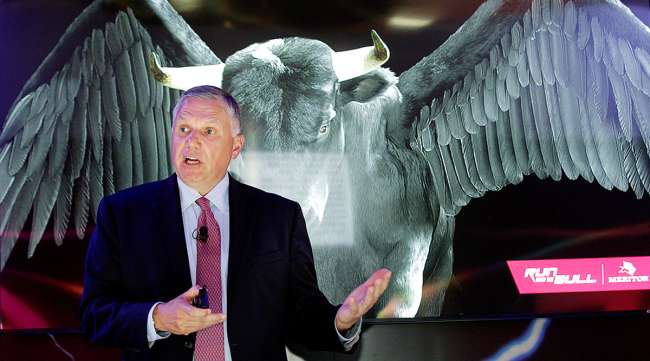Lots of Rapid Change Seen for Trucking, Truck Making

ATLANTA — While trucking and truck making have changed significantly since deregulation in 1980 and even during this century, there will be no period of stasis and consolidation for the industry, as more change is expected quickly, executives said.
Commercial vehicles that are powered by electricity, more fuel efficient and safer — and perhaps all three — are coming soon to North America, said speakers at a Heavy Duty Manufacturers Association event Sept. 27.
“There is a sea change underway on the electrification of drivetrains for commercial vehicles,” said Jay Craig, CEO of Meritor Inc., a major component manufacturer based in Troy, Mich., involved in electric axles.
NACV COVERAGE: All stories | Live blog | Photo gallery
“The next 10 years will revolutionize the industry. The cost of the technology is rapidly decreasing due to the scale of Chinese investment,” Craig said.
His presentation, one of several “mini lectures,” was part of the North American Commercial Vehicle Show here.
Craig said Chinese factories crank out 800,000 electric trucks and buses per year, with buses in the majority.
The key to workable electric vehicles, Craig said, is batteries. They’ve been heavy and costly and need to become less so on both counts, he said.
In 2010, Craig said, a battery pack for a commercial vehicle weighed about 2,200 pounds. A pack with the same amount of energy now weighs about 1,470 pounds, and by 2025, Craig said, he expects it to drop to 880 pounds.
As for the cost of energy, Craig said it is now $250 per kilowatt-hour, but expected to drop 40% to $150 per kwh by 2025.
The main reason for adopting electric drivetrains, he said, is emissions, both greenhouse gases and criteria pollutants such as nitrogen oxides and particulate matter. Both national governments and municipalities are interested in lower emissions, Craig said.
One aspect of electric that will help work out the cost aspect is that “electric vehicles are more friendly to components.”
Transmissions could move from the traditional location right behind the engine, and would only need two to four speeds.
“You get a far broader power band with an electric motor than with a diesel engine,” Craig said. Accessories operated by belt drives off the engine “would be going away.”
He also said there would be less need for brakes, therefore they would last longer and chassis could be completely reconfigured.
Brian Collie, managing director of the Boston Consulting Group, spoke of saving life. Advanced driver-assistance systems, or ADAS, many of which are currently on the market, have the ability to save lives by either reducing the number of accidents or lessening the severity of those that occur.
“Annually, there are 500,000 accidents involving large trucks, 4,000 of them fatalities and $2.4 billion in property damage. Human error is at fault 90% of the time,” Collie said, adding a grim prediction for the future: “It’s going to get worse before it gets better.”
He estimates that more frequent use of existing technologies could save more than 10,000 lives during the next 13 years.
Collie gave credit to large and medium-size trucking companies that are often adopters of systems from Bendix Commercial Vehicle Systems, Meritor Wabco and others for their heavy-duty trucks. A major item on his wish list included seeing usage spread into vehicles in Classes 6 and 7.
He also said passing on such systems is a false economy.
“There’s a feeling among some fleets on big accidents that ‘It’s not going to happen to me.’ But when it does, all of your savings go out the window,” Collie said. He has reviewed reports showing that 70% of rear-end collisions could be eliminated with current collision mitigation systems.
Scott Perry compared Ryder System of Miami to Lockheed Martin Skunk Works for product research.
“Not every technology we test works, but we’re a perfect testing bed, working with vehicles in all duty cycles,” said Perry, Ryder’s chief technology and procurement officer.
Technologies the company currently uses heavily are: automated manual transmissions for trucks, collision mitigation, lane-departure warning, telematics (including electronic logging devices), automatic tire-inflation systems, and two-way, in-cab video cameras.
He also said there is interest in autonomous vehicles, platooning trucks, vehicle-to-vehicle communication, drones, hydrogen fuel cells, robotic parcel delivery and Jay Craig’s electric vehicles.
“We’re diving into all of these and it’s exciting,” he said. “It’s a global game and many organizations are working on these developments. It’s coming,” Perry said.
As for fuel efficiency, Mike Roeth, executive director of the North American Council for Freight Efficiency, spoke on the results of NACFE’s Run on Less trials where current trucks delivering their regular loads averaged 10.1 miles per gallon.

